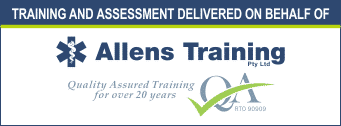In the world of advanced first aid, there’s a tool that stands out for its ability to manage life-threatening bleeding: hemostatic dressings. These aren’t your everyday dressings; they’re specially designed to control severe bleeding that can’t be managed with standard first aid techniques.
In this post, we’ll explore hemostatic dressings, their importance in emergency situations, and how they work. Whether you’re interested in medicine, considering a career in emergency services, or simply want to be prepared for any situation, understanding them could one day help you save a life.
You might notice “haemostatic” with an “a” (British spelling) or without it (US spelling). I’ve used the US spelling here—just a heads-up!
What Are Hemostatic Dressings?
The term “hemostatic” might sound complex, but it’s actually quite straightforward. “Hemo” relates to blood, and “static” means stop. So, they are essentially bleeding-control dressings.
Unlike standard gauze or bandages, hemostatic dressings are impregnated with chemicals that help blood to rapidly form a clot and seal a wound. They’re designed for use in situations where direct pressure or other standard dressings aren’t effective, or when the bleeding is occurring in an area where a tourniquet can’t be used, such as the neck, groin, or armpit.
How Does Blood Clotting Work?
To understand why hemostatic dressings are so effective, it’s helpful to know a bit about how blood clotting works naturally:
- When you get a cut, platelets in your blood rush to the injury site and stick together, forming a small plug.
- Your blood then starts a chain reaction that converts a protein into fibrin threads.
- These threads weave through the platelet plug, strengthening it and forming a clot that seals the wound.
However, in severe injuries, this process can be overwhelmed due to:
- Massive blood loss
- Disruption of clotting factors
- High pressure and rapid blood flow
- Large or complex wounds
- Underlying health issues
This is where hemostatic dressings come in, supporting and enhancing the body’s natural clotting process.
A Brief History of Hemostatic Dressings
People have been trying to stop bleeding for as long as we’ve been getting hurt. But modern hemostatic dressings really started to take shape in the 1990s, driven by military needs. There were even some early experiments with clotting agents during World War I and more progress during World War II. The goal? Stop severe bleeding on the battlefield, which eventually led to the advanced materials we use today.
INFO BOX: Did You Know? Hemostatic agents are routinely used in surgery. If you’ve had major surgery, you might have benefited from one of these without even knowing it!
Types of Hemostatic Dressings
Hemostatic dressings come in various forms:
- Gauze impregnated with clotting agents (e.g., kaolin clay)
- Foam pads containing hemostatic chemicals
- Powders or granules to be sprinkled into a wound
- Combinations of the above
In advanced first aid and trauma situations, gauze impregnated with a clotting agent is commonly used to control severe bleeding. However, depending on the circumstances—such as a remote location or the responder’s level of experience—different types of dressings may be used.



How to Apply a Hemostatic Dressing
Always remember: hemostatic dressings should be used in combination with direct pressure—not as a substitute.
Proper application is essential for its effectiveness. Here’s a step-by-step guide:
- Assess the Situation
- Follow the DRSABCD action plan and ensure safety
- Control life-threatening bleeding takes priority over ABCD
- Wear gloves
- Evaluate the wound: size, depth, rate of blood loss
- Call for Help
- Open the packaging
- Apply the gauze
- Layer and pack the gauze into the wound cavity until it’s filled above skin level
- Apply firm pressure for 5 minutes
- Check wound stability
- Assess bleeding flow (continue applying pressure if necessary)
- Wrap the wound with a roller bandage, if possible
- Monitor closely while waiting for medical help
- Preserve the dressing package
- Send it with the casualty for emergency medical staff reference
- Consider wrapping the package in the final layer of wound bandage

Frequently Asked Questions
Q: Can Hemostatic Dressings Be Removed? A: Generally, hemostatic dressings should remain in place until professional medical help is available. Premature removal could disrupt the clotting process.
Q: Do Hemostatic Dressings Dissolve? A: Some modern dressings are designed to dissolve over time as the wound heals. Others may remain in place until physically removed. Follow the specific guidelines provided with the dressing.
Q: How do surgeons locate hemostatic dressings? A:They have a thin radio-opaque thread woven through them. This thread is visible on X-rays, helping surgical teams assess the depth and extent of the injury.
Get Trained.

Knowing how to use hemostatic dressings is vital , but maintaining your skills is equally important. First aid techniques evolve, and staying up-to-date ensures you’re prepared to act confidently and effectively in emergencies.
Why not invest in Advanced First Aid Training! You’re equipping yourself to potentially save a life when it matters most and going beyond the basics.






